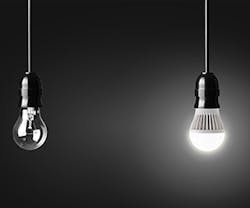LED Innovators Earn Nobel Prize
Joining the illustrious list of Nobel Laureates for Physics this year are the scientists who developed the first blue light-emitting diode (LED). Isamu Akasaki, Hiroshi Amano, and Shuji Nakamura were honored for their development of lamps that produce white light while lasting 10-100 times longer than traditional incandescent or fluorescent bulbs. LEDs provide a double benefit – not only do lamps need to be replaced less frequently, but fewer of them must be produced, leading to a reduction in materials usage.
In addition to using dramatically less energy than other types of lighting, the Nobel Foundation also mentions that LEDs produce more light, with the most recent record being 300 lm/W as opposed to just 16 for incandescent bulbs and 70 for fluorescents
With nearly 25% of the world’s energy consumption coming from lighting needs, LEDs provide not only a solution to save money on electricity costs but also increased access to electricity for those who lack access to traditional electric grids. Due to their low power needs, LEDs are ideal for microgrid applications and can be powered by inexpensive solar panels.
“Incandescent light bulbs lit the 20th century; the 21st century will be lit by LED lamps,” says the Nobel Foundation.
